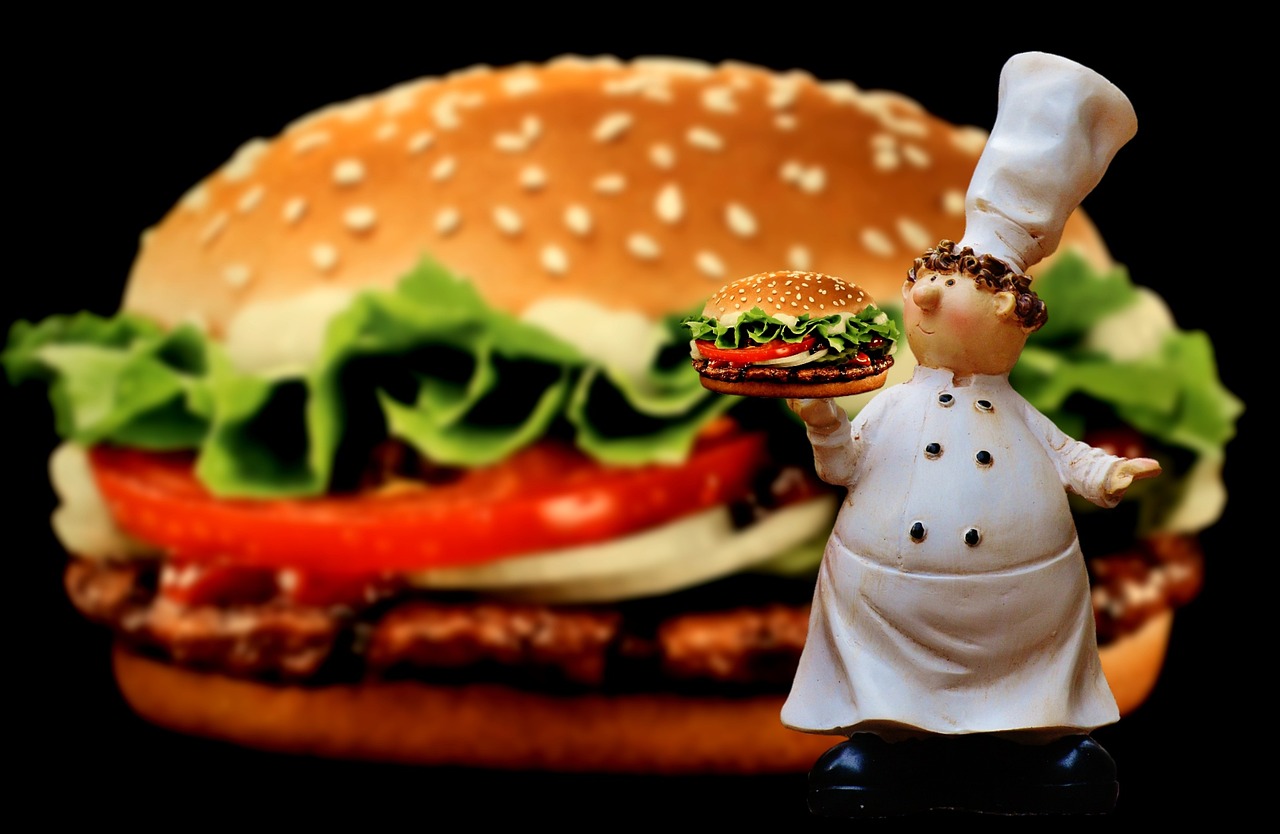Polite Phrases for Ordering: A Culinary Etiquette Guide
Navigating a restaurant menu in a foreign language can be a daunting task, but fear not! With a few polite phrases up your sleeve, you can master the art of ordering food in English and impress the waiter with your culinary finesse. Let’s explore the magical world of “please,” “thank you,” and “may I,” transforming your dining experience into a polite and delightful affair.
1. The Magic Word: “Please”
Politeness starts with a simple word: “please.” When placing an order, incorporating this little gem can make a world of difference. For example, instead of saying, “I’ll have a coffee,” try “I’ll have a coffee, please.” It’s a subtle touch that shows appreciation and courtesy. Your polite English order has officially begun!
2. “May I Please Have…”
Adding “may I” to your order elevates it to another level of politeness. For instance, instead of just saying, “Chicken curry,” try “May I please have the chicken curry?” This phrasing demonstrates respect for the establishment and is guaranteed to win you a smile from your server.
3. Gratitude Galore: “Thank You”
Expressing gratitude is vital in any language, and in English, it’s no different. When your order arrives, don’t forget to say “thank you.” This simple act of politeness can brighten your server’s day and create a pleasant dining experience. A little appreciation goes a long way.
4. “Could I Get…”
“Could I get” is a versatile and polite phrase for ordering food. It conveys a sense of politeness while making your request clear. For example, instead of bluntly stating, “A glass of water,” you can say, “Could I get a glass of water, please?” It’s the difference between making a demand and extending a courteous request.
5. “I Would Like To Try…”
If you’re feeling adventurous and eager to try something new, “I would like to try” is the perfect phrase. This shows that you’re open to new flavors and willing to explore the menu. For example, “I would like to try the chef’s special, please.” It adds an element of curiosity and respect.
6. “Is It Possible to Have…”
When you want to ensure your order is possible or to inquire about specific preferences, “Is it possible to have” is the way to go. For instance, if you have dietary restrictions and need a modification, you can say, “Is it possible to have the salad without croutons?” It’s a polite and considerate approach.
7. “Might I Request…”
“Might I request” is a sophisticated way to place your order politely. It’s a subtle request that conveys both elegance and consideration. For instance, instead of merely stating, “The bill, please,” you can say, “Might I request the bill?” It adds a touch of refinement to your dining experience.
8. “Would It Be Possible To…”
This phrase is perfect when you want to ensure that your order is feasible. For example, if you have a specific preference for your steak, you can say, “Would it be possible to have the steak cooked medium-rare?” It’s polite and accommodative, showing your respect for the chef’s expertise.
9. “If It’s Not Too Much Trouble…”
Adding this phrase to your request demonstrates consideration for the staff’s workload. For example, instead of merely saying, “A refill, please,” you can say, “A refill, please, if it’s not too much trouble.” It’s a subtle way of expressing your request politely.
10. “When You Have a Moment…”
When your server is busy, it’s polite to acknowledge their time. Saying, “When you have a moment, could I have a dessert menu, please?” is a courteous way of requesting their assistance without pressure.
Navigating Special Requests and Dietary Restrictions
The culinary world is a vast playground of flavors and delights, but what if you have specific dietary requirements or unique preferences? Fret not; ordering food in English can be a breeze even with special requests. Whether you’re a vegetarian, allergic to nuts, or just want that salad without croutons, we’ve got you covered. Let’s dive into the art of making special requests and accommodating dietary restrictions with a pinch of politeness and a dash of charm.
1. Let’s Talk About Dietary Restrictions
Navigating the Menu with Allergies: If you have allergies, it’s crucial to inform your server about them. Use polite phrases such as, “I have a nut allergy,” or “I’m allergic to seafood.” This ensures your meal is prepared safely and without any unwanted ingredients.
All Hail the Vegetarians: Being a vegetarian doesn’t mean your choices are limited. Instead, you have a world of delectable vegetarian dishes to explore. Polite ordering is as simple as saying, “I’m a vegetarian. Could you recommend some veg options?”
The Vegan Dilemma: Vegans, you’re in good company. Politely ask your server, “Could you guide me to the vegan choices on the menu?” This shows that you’re considerate of your dietary choices.
2. Crafting Special Requests with Grace
Customizing Your Order: Don’t be shy to customize your order. You can politely say, “I’d like the burger, but without the cheese, please.” It’s your meal, so make it your own.
A Gluten-Free Journey: For those with gluten intolerance, request dishes to suit your needs. A courteous approach is, “I’m gluten intolerant. Could you recommend gluten-free options?” This makes dining a breeze.
Healthy and Light Choices: If you’re aiming for a healthier option, ask, “Do you have any light and healthy dishes?” This shows your commitment to your well-being.
3. Mindful Phrasing for a Pleasant Experience
Taking It Slow: You can say, “I’m in no rush. Please bring courses one at a time.” It ensures a leisurely dining experience.
Temperature Preferences: Whether you like your steak rare or well-done, polite phrasing matters. For instance, “Could I please have the steak well-done?” is courteous.
Beverage Etiquette: When ordering drinks, “May I have a glass of white wine, please?” is a polite way to request.
4. The Gratitude Game
Say Thank You: Remember to say thank you when your order aligns with your requests. Gratitude goes a long way in creating a positive dining experience.
Appreciate the Recommendations: If your server recommends a dish, show your appreciation with a simple “Thank you for the suggestion.”
The Power of Politeness
Politeness in ordering food makes dining not only pleasant for you but for the restaurant staff as well. A little courtesy goes a long way in ensuring that your dining experience is enjoyable, accommodating, and delectable. So, the next time you ponder, “How can I order food in English with special requests?” just remember: a touch of politeness can turn your meal into an unforgettable experience. Bon appétit!
Navigating Restaurant Dilemmas with a Smile
Dining out is a delightful experience, but what happens when things don’t go as planned? From handling reservations to tipping etiquette, we’ve got your back. Here’s how you can gracefully tackle restaurant situations and ensure your dining adventure remains nothing short of fantastic.
1. The Reservation Conundrum
Last-Minute Dilemmas: So, you’ve decided to dine out spontaneously. While reservations are often recommended, don’t be discouraged if you haven’t made one. Politely inquire, “Do you have a table available for two?”
Respect the Reservation: If you have a reservation, it’s essential to arrive on time. Being late can inconvenience both the restaurant and other diners. If you’re running late, give them a call and apologize for the delay.
2. The Menu Mysteries
Decoding the Specials: When the server presents the daily specials, take your time to understand. Don’t hesitate to ask, “Could you explain the specials in detail?” This ensures you know exactly what you’re ordering.
Allergies and Preferences: If you have dietary restrictions or allergies, feel free to ask, “Can you recommend a dish that’s nut-free?” or “I’m a vegetarian; what are my options?”
3. The Ordering Adventure
Patience is Key: When ready to order, don’t rush. Take your time and politely say, “We’re ready to order now.” It’s your dining experience, so savor the moment.
Double-Check Your Order: Before your server leaves the table, ensure your order is correct. It’s perfectly fine to say, “Just to confirm, we ordered the pasta with no cheese, right?”
4. The Bill Matters
Splitting the Bill: If you’re dining with a group and need separate checks, communicate this in advance. “Could we have separate bills, please?” is a considerate request.
Tipping with Appreciation: When it’s time to pay the bill, don’t forget to show your appreciation. Tipping is customary in many places. Thank your server with a simple “Thank you for the excellent service.”
5. Handling Mistakes Gracefully
Order Mishaps: If your order isn’t as expected, don’t fret. Kindly let your server know, “I think there might be a mistake with our order.” Mistakes happen, and a polite mention can quickly resolve them.
Remaining Courteous: Even if you encounter a hiccup in your dining experience, maintain your courteous demeanor. Remember, restaurant staff are there to make your visit enjoyable, and treating them kindly can go a long way.
6. The Final Farewell
Expressing Gratitude: Before leaving the restaurant, express your gratitude. A simple “Thank you for a wonderful evening” is a delightful way to end your dining experience on a positive note.
Mastering the Art of Effective Communication
Effective communication is the secret sauce that enhances your dining experience. From conveying your order clearly to addressing concerns with ease, here are some valuable tips for seamless communication during your culinary adventures.
1. Clear and Confident Ordering
When it’s time to order, speaking clearly and confidently is your first step towards a great dining experience. Avoid mumbling or speaking too softly. Instead, use a clear, steady voice to say, “I’d like to order the lasagna, please.”
2. Embrace Non-Verbal Communication
Effective communication isn’t limited to words alone. Non-verbal cues like making eye contact with your server or giving a genuine smile can express your satisfaction or gratitude without uttering a word. It creates a friendly atmosphere that can make your meal even more enjoyable.
3. Asking for Recommendations
If you’re unsure about what to order, don’t hesitate to ask for recommendations. You can say, “Could you recommend a popular dish?” or “What’s your personal favorite on the menu?” Your server is there to help, and their suggestions can lead to delightful surprises.
4. Clarifying Dietary Needs
For those with dietary restrictions or allergies, clear communication is vital. Use phrases like, “I have a nut allergy; can you confirm this dish is nut-free?” or “I’m a vegan; are there any suitable options?” By clearly communicating your dietary needs, you ensure a safe and satisfying meal.
5. Graciously Handling Mistakes
In the rare instance that a mistake occurs with your order, the key is to handle it graciously. Instead of getting upset, politely mention the issue. Saying something like, “I believe there’s a mix-up with our orders; could you please check?” shows understanding and respect.
6. The Tipping Tradition
Tipping is a customary practice in many places, and it’s part of effective communication in the dining world. When you appreciate the service, express it through your tip. A simple “Thank you for the excellent service” as you leave is a wonderful way to convey your satisfaction.
7. Expressing Gratitude
Before you leave the restaurant, take a moment to express your gratitude for the experience. You can say, “Thank you for a wonderful evening” or “We had a delightful time, thanks.” Such expressions of gratitude make the staff’s day and leave a lasting impression.
8. Leaving Constructive Feedback
If you have feedback to share, both praise and suggestions are valuable. A constructive review can help the restaurant improve. Whether it’s online or through a comment card, remember to provide feedback thoughtfully and politely.
9. Politeness Matters
Politeness is the secret ingredient that enhances communication. From the moment you arrive until you leave, using “please,” “thank you,” and “excuse me” creates a warm and friendly atmosphere.
10. Taking Your Time
Rushing through a meal is the antithesis of effective communication. Take your time, enjoy the moment, and don’t feel pressured to order, eat, and leave in a hurry. This can make the experience more relaxed and enjoyable for everyone.
11. Actively Listening
Effective communication is a two-way street. When your server or fellow diners speak, listen actively. It ensures you understand orders correctly and respond appropriately. Nodding, making eye contact, and paraphrasing what you hear are helpful techniques.
12. Adapt to the Setting
The style of communication may vary depending on the dining setting. For casual eateries, a more relaxed tone is suitable, while in fine dining establishments, a more formal approach is appreciated. Adapting to the setting creates a harmonious dining atmosphere.
13. Saying No Politely
If you need to decline an offering or if there’s an issue with the order, it’s important to say no politely. For instance, “I appreciate the offer, but I’ll pass on dessert” is a polite way to decline.
In Conclusion
Effective communication elevates your dining experience to new heights. Whether you’re ordering, expressing gratitude, or handling a concern, clear and polite communication ensures a positive and memorable meal. Remember, your dining adventure is a shared experience, and by communicating thoughtfully, you contribute to a harmonious and enjoyable atmosphere for all. So, savor every moment, embrace the art of effective communication, and bon appétit!




